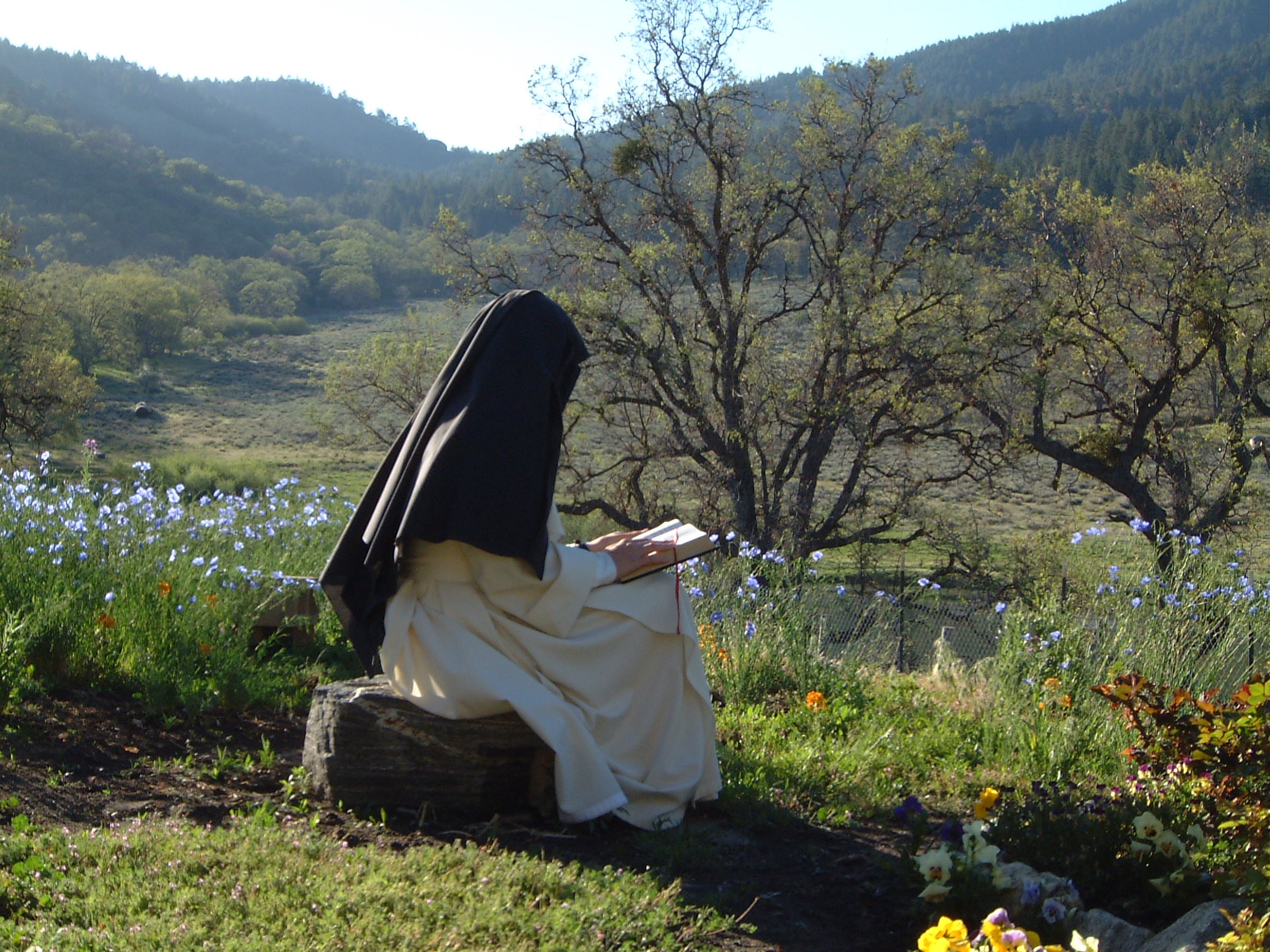So what, exactly, is a mystic?

A brief history of mysticism
A monk, nun or hermit is not necessarily a mystic. Traditionally mystics were either monks, nuns or hermits and while this remains true today, contemporary mystics can be found outside traditional boundaries.
Christian mysticism dates back to the Desert Fathers, when a group of early Christians withdrew to the desert to more faithfully follow the teachings of Jesus. Christian monasticism is credited as beginning here, and early Christian mysticism was associated with the same movement.
?Mysticism? is derived from the Greek ???, meaning ?to conceal?, and its derivative ????????, mystikos, meaning ?an initiate?. In the Hellenistic world, a ?mystikos? was an initiate of a mystery religion. ?Mystical? referred to secret religious rituals and use of the word lacked any direct references to the transcendental. ? from Wikipedia
Jewish mysticism pre-dates Christian monks by six to eight centuries.
According to a tradition that goes back to Talmudic times, there are in every generation thirty-six righteous men who are the foundations of the world. If the anonymity, which is part of their very nature, were broken, they would be nothing. One of them is perhaps the Messiah, and he remains hidden only because the age is not worthy of him. ? from Wikipedia
In the west mysticism can be traced back to Greece. It is also prevalent in Buddhism, Zen, Taoism, Hinduism and throughout many cultures. In some cultures, mystics are called shamans or even soothsayers. The Three Kings associated with the birth of Jesus were astrologers. or mystics.
Pythagorus, Dogen and Rumi were all considered mystics. More recent mystics include Helena Blavatsky, George Bernard Shaw, Aldous Huxley and Thomas Merton.
Overview of mysticism
Mysticism is popularly known as becoming one with God or the Absolute, but may refer to any kind of ecstasy or altered state of consciousness which is given a religious or spiritual meaning. It may also refer to the attainment of insight in ultimate or hidden truths, and to human transformation supported by various practices and experiences.
Mysticism ? Wikipedia
The term ?mysticism? has Ancient Greek origins with various historically determined meanings. Derived from the Greek?
en.m.wikipedia.org
The term ?mysticism? has Ancient Greek origins with various historically determined meanings. Derived from the Greek word ???, meaning ?to conceal?, mysticism referred to the biblical liturgical, spiritual, and contemplative dimensions of early and medieval Christianity. During the early modern period, the definition of mysticism grew to include a broad range of beliefs and ideologies related to ?extraordinary experiences and states of mind?.
In modern times, ?mysticism? has acquired a limited definition, with broad applications, as meaning the aim at the ?union with the Absolute, the Infinite, or God?. This limited definition has been applied to a wide range of religious traditions and practices, valuing ?mystical experience? as a key element of mysticism.
What does a mystic do?
A mystic retreats and contemplates. A western religious mystic desires union with God. An eastern or non-religious mystic desires a merging with the Oneness, or an experiencing of the emptiness or Nothingness.
A mystic may or may not be a hermit. Some mystics have a life combined of both solitude and a social integration. St. Teresa of Avila, for example, lived the life of a cloistered nun but was integrated with her sisters.
Mystics and recognition
Generally speaking, mystics who are part of a formal religion are recognized by some form of authority or superior. Recognition often comes from the abbot of a monastery or the Mother Superior of a convent.
Mystics who are recognized by convents, monasteries or hermitages are respected simply because they are recognized. On the other hand, mystics who do their studies on weekend camping trips or in their own living rooms are generally anonymous. They are considered ?unrecognized? and are typically marginalized. Because they live well outside a sympathetic support structure, they are often accused of being impractical, ?having their heads in the clouds? or not being sufficiently ?down to earth.?
Having said that, it is probably safe to say that all mystics are misunderstood by anyone who?s not a mystic or at least someone who is very familiar with them. Some say a person cannot be a mystic until a powerful altering experience or a strong insight of some sort has occurred. Others will argue that mysticism is a journey that often begins with devotion.
People who are devout in their practices will tend to hold mystic in high esteem. It is generally from the devout that the mystic may find ways to enjoy some form of normal relationship.
The mystic who is ?recognized? is generally esteemed because they are recognized. The difference between a recognized and unrecognized mystic, is simply that someone has the eyes to see and is able to recognize.
Though you have eyes, don?t you see? And though you have ears, can?t you hear? Don?t you remember? ? Bible, New Testament, Mark 8:18
Self recognition
Because there are so many people who live, study and work outside of the framework of traditional monasteries and religions, The Little Creek Monastery has taken the rather unique position of self recognition. Self recognition in our monastery is not restricted to mystics. Actually, we are open to anyone.
Self recognition is not an altogether bad thing, because it allows people to state what they themselves already know about themselves. You may criticize that by saying they have no certifications. But they don?t necessarily need someone to self certify what they themselves already know. This is what Ralph Waldo Emerson repeatedly emphasizes: self reliance.
Of course, the critic may think a person may be certifying themselves too aggressively or handsomely, which is a legitimate concern. The Little Creek Monastery tries to take that into account by not awarding levels or ranks, medallions or medals. That way, everyone can be on a level playing field, and no one gets the chance to show off how great they are.
Anyway, to us, you?re either a mystic or you?re not, and you?re either revealing that to people or you?re not.
And speaking of clarity, there is pretty much always someone who can see deeper and better than you.
The Five Practices of the Everyday Mystic
- Study and Training ? formal or informal, reading or seminars, certifications or degrees. The so-called initiate never backs off. Study tends to be a constant thread throughout their lives.
- Prayer and Meditation ? there are many forms of prayer and meditation. For some, it?s as simple as breathing. For others, it?s a ritual or time set aside each day. For anyone, it can be about finding a better or deeper form of connectedness.
- Application and Integration ? application is deliberately placed at the center of this list because if you don?t apply it, what?s the point? The everyday mystic is practicing applying and using it in anything and everything they do and encounter. Perhaps the most vexing question for a mystic is, ?So, what exactly am I supposed to actually do with all this??
- Modesty and Humility ? if you meet an ordinary mystic, you might not even notice them. They?re not usually the star attraction. They tend to live small. They?ll also tend to give you their last dollar, and are typically utterly unobtrusive in helping the needy. They also tend to be givers, not takers.
- Devotion and Tirelessness ? the dedicated everyday mystic can?t turn off the switch. It?s not that they are uninterested in other things. It?s more like their ?devotion? is something that?s burned in so deep that it?s never quite out of sight and mind.


